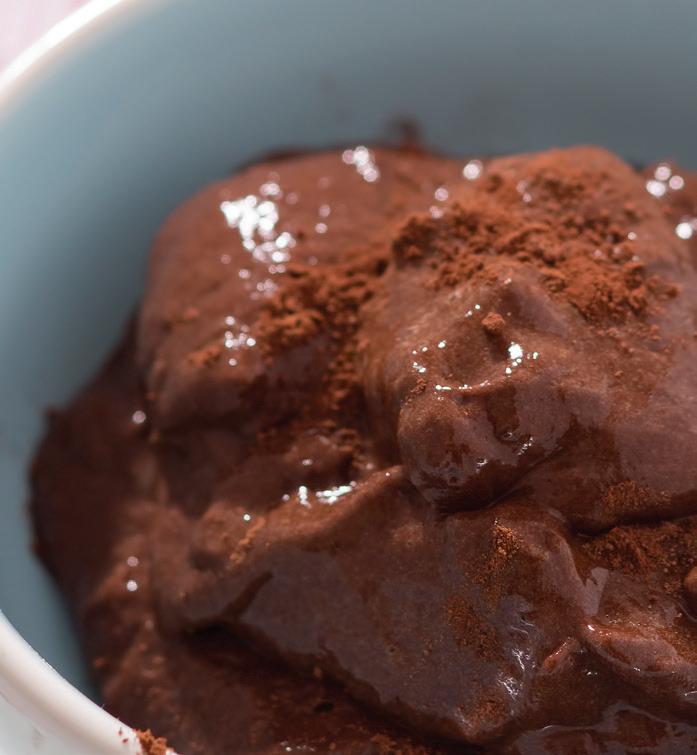
7 minute read
WHAT YOU CAN LEARN FROM POPULAR LEARN FROM POPULAR DIETS. They all have this They all have this
WHAT YOU CAN LEARN FROM POPULAR DIETS THEY ALL HAVE THIS ONE GUIDELINE IN COMMON.

People on the paleo diet are eating lots of proteins, vegetables and fruits, and avoiding grains, dairy and beans.
People who follow a ketogenic (keto) diet consume a lot of fat, a small amount of protein and a very small amount of carbohydrates.
Similarly, the Mediterranean diet, the DASH diet, fl exitarian diet and other popular regimens all have their specifi c must-dos and taboos.
But, varied as they are, all the eating programs have one major thing in common, according to Lauren Bernstein, MS, RD, CDE, at Robert Wood Johnson University Hospital (RWJUH) Rahway: “You’ve got to get the processed foods out of your diet and start eating more real food,” she says.


WHAT’S PROCESSED?
“Processed” food, as the name indicates, means that a food has been changed in some way—cooked, canned, frozen, packaged, fortifi ed, preserved—on the way to your table.
Some foods are minimally processed (think frozen vegetables or roasted nuts), while others are processed with a long list of added sugars, sodium, dyes, gums, stabilizers and so on.
“If you can’t pronounce or recognize the ingredients on the label, the food is ultraprocessed,” Bernstein says. “Th is category includes things like chips, instant noodles, breakfast cereals, chicken nugg ets and ready-to-eat microwaveable foods. Th ey’re designed for tastiness and a long shelf life, but not for a healthy diet.
“Th at’s why all the popular diet plans, as well as recommendations for people with health conditions such as high blood pressure and diabetes, involve cutting out or strictly limiting highly processed foods,” she says.
“Even on WW [formerly Weight Watchers], the ‘zero point’ foods—the ones you can eat your fi ll of, including beans, fi sh, egg s, fresh vegetables and fruit—don’t have zero calories. Th ey’re just healthy, unprocessed foods.”



KEEP IT SIMPLE
While eating mostly unprocessed foods is a straightforward guideline, it may not seem easy to follow at fi rst. “Healthy eating takes eff ort,” Bernstein says. “You have to cook, and you have to plan.”
Menus should include mostly fresh fruits and vegetables, unprocessed meats, nuts, beans, healthy fats like hummus and avocado and low-fat dairy products, with limited sugar, preservatives and white fl our.
“I see clients every day, working parents who are so busy with kids and their activities—they’re not making food an important thing in their lives,” Bernstein says. “Th ey’re looking for heat-and-eat foods and takeout. But then they end up 50 pounds overweight, with prediabetes or high cholesterol, and their doctor tells them they have to change the way they eat.”
STEP BY STEP
Creating new habits is the key. “Do some prep work on the weekends; use a slow cooker that cooks your dinner all day while you’re at work,” Bernstein advises.
Also, meals don’t need to be complicated. “Sauté chicken cutlets and bake a sweet potato,” she says. “Stir-fry some shrimp and vegetables and throw it over brown rice. It doesn’t have to be gourmet; the important thing is that you prepare it yourself.”
Don’t feel you need to eliminate all processed foods in one go. “Th is is a journey—a marathon, not a sprint,” Bernstein says. “Start with small goals. For breakfast, stop going to the doughnut shop and make egg s with a piece of whole wheat toast at home. Pack yourself lunch in the morning. Getting up just a bit earlier to have time to do these things can make all the diff erence.”
Finally, know that big payoff s are in store when you cut back on processed foods. “Th e most immediate eff ect is that you’ll fi nd you have more energy,” Bernstein says. “And when you go to the doctor for a checkup, you’ll see positive changes in your cholesterol, blood pressure and blood sugar levels. Making these changes will give you a clean bill of health—and make you feel good about yourself.”
If you have diabetes or prediabetes and need help with blood sugar control, call the RWJUH Rahway Diabetes Center at 732.499.6109.

QUICK AND CLEAN COOKING In addition to being nutritious, meals made from unprocessed foods can be delicious—and fast. “Unprocessed foods are readily available and can fit any budget,” says Diane Weeks, RD, who provides healthy cooking education at RWJUH Rahway. “Preparing more meals with unprocessed foods will keep you and your family healthy without the need for a rigid diet.” Keep some basics in your pantry, refrigerator and freezer so you can put together a healthy meal without a lot of prep work.


SHRIMP AND POLENTA


INGREDIENTS:
• Frozen shrimp, defrosted • Cherry tomatoes • Fresh spinach • Polenta • Balsamic vinegar
DIRECTIONS:
• Sauté shrimp in a bit of olive oil until pink and opaque. Remove shrimp from pan. • Add a handful of cherry tomatoes to pan and cook until they start to burst. Throw one or two handfuls of fresh spinach into pan and cook until wilted. • Return shrimp to pan and toss until hot. Serve shrimp mixture over polenta with a drizzle of balsamic vinegar.

SUBSTITUTIONS:
Instead of polenta, serve shrimpvegetable mixture over cooked brown rice or pasta. For a vegetarian version, skip the shrimp and stir in cannellini beans.
CREAMY WHITE BEANS WITH GREENS


INGREDIENTS:
• Bag of dried white beans • ½ cup extra virgin olive oil • Chopped fresh sage • Garlic greens • Salt and pepper to taste
DIRECTIONS:
• In the morning, empty the bag of dried white beans into a slow cooker and cover generously with water. Cook on low so they are soft by the evening. • Drain the water and add chopped fresh sage and the olive oil, salt and pepper. • Stir all ingredients together until they are creamy. Serve with sautéed garlic greens.

SUBSTITUTIONS: Instead of sage, use fresh herbs such as rosemary, parsley or thyme. Add chopped vegetables such as carrots or celery to the slow cooker for extra nutrients and fl avor.
HEALTHY CHOCOLATE “PUDDING”


INGREDIENTS:
• Ripe banana • ½ to 1 tablespoon unsweetened cocoa powder • 1 tablespoon raisins • ½ tablespoon natural peanut butter
DIRECTIONS:
• Cut banana in pieces and microwave for 20 to 30 seconds. • Add cocoa powder to taste.
Add raisins and natural peanut butter. • Mix and mash together until you achieve pudding consistency.

SUBSTITUTIONS:
Swap raisins for another dried fruit, such as tart cherries, blueberries or chopped apricots. For crunchy texture, top with unsalted nuts, granola or whole-grain cereal.




















